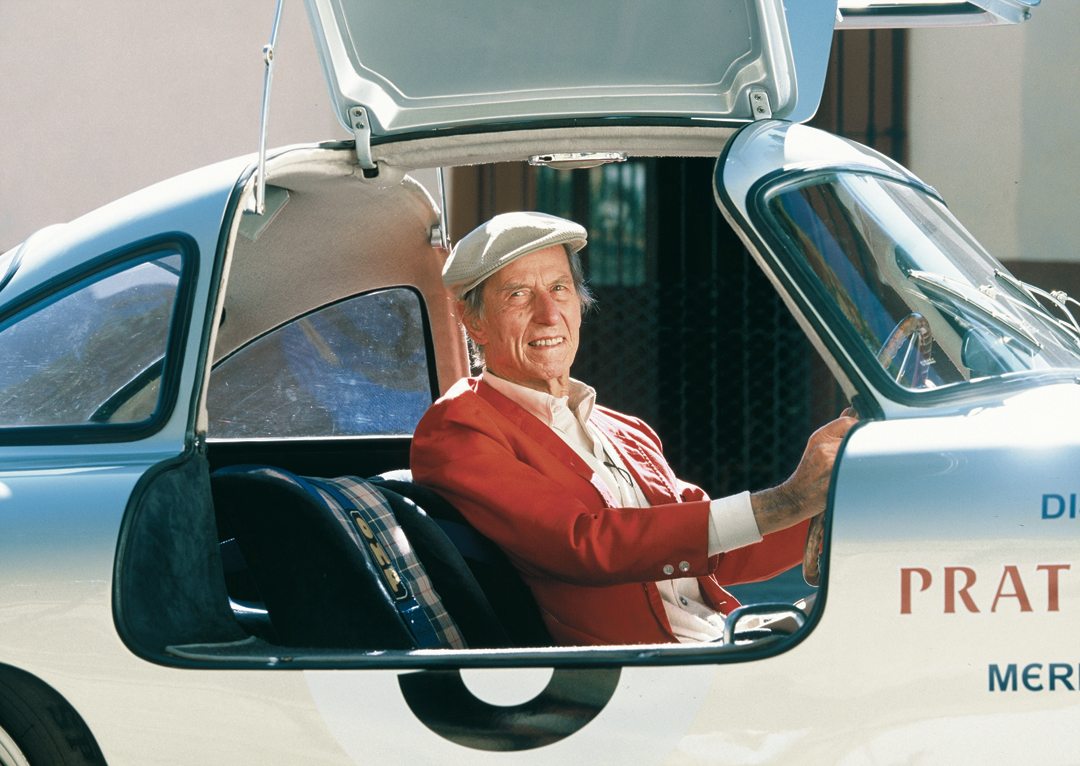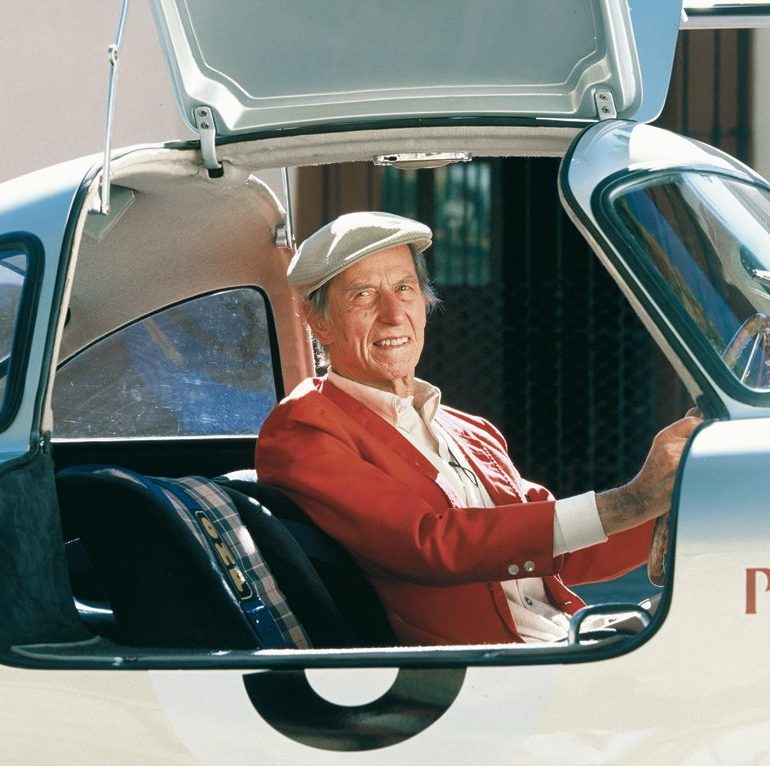In remembering and memorializing John Fitch upon the occasion of his death, Vintage Racecar has produced this brief photographic summary of his racing career.


As a member of the factory Mercedes-Benz racing team, the only American ever to race for the three-pointed star, he was to share a 300 SLR with Frenchman Pierre Levegh at Le Mans in 1955. Instead of a glittering accomplishment, Fitch found his dreams ripped to shreds as Levegh was consumed by the accident that remains the most horrific in motor sports history.

Fitch ultimately found himself living the role of racing’s elder statesman in the USAs, and became a regular fixture at gatherings of the motorsports clan across the land. Here we offer a selection of appreciative comments from contemporaries who worked with and raced against him. We will all miss you, John Fitch.
Sir Stirling Moss – “I think John’s greatest contribution to motoring was the Fitch Barrier, which, funnily enough, was never used in motor racing. However, on American roads it has saved numerous lives. As for his motor racing and driving skills, he was a competent driver, but I would not describe him as a great driver. He did a terrific job in the Mille Miglia in 1955 where he won his class in the gullwing Mercedes. We had joined Mercedes together in 1955, I’m not too sure what Neubauer saw in us, but I suppose both he and I fitted the Mercedes program at that time.

Photo: Fitch Collection

Photo: Mercedes-Benz
As a reserve driver, John didn’t get any race outings with Mercedes at Formula One Grand Prix events. So, for the 1955 Italian GP I loaned him my Maserati 250F. I knew he’d look after the car; as I’ve said he was very competent, he wasn’t one of those wild drivers. I knew he’d be smooth, and if he drove well he could finish with it. I believe he finished 9th.
He was my co-driver when we won the 1955 RAC Tourist Trophy meeting at Dundrod, Northern Ireland. I chose him to partner me mainly because a) there was no language barrier, b) he was a competent driver, and c) I could rely on him to look after the car.”
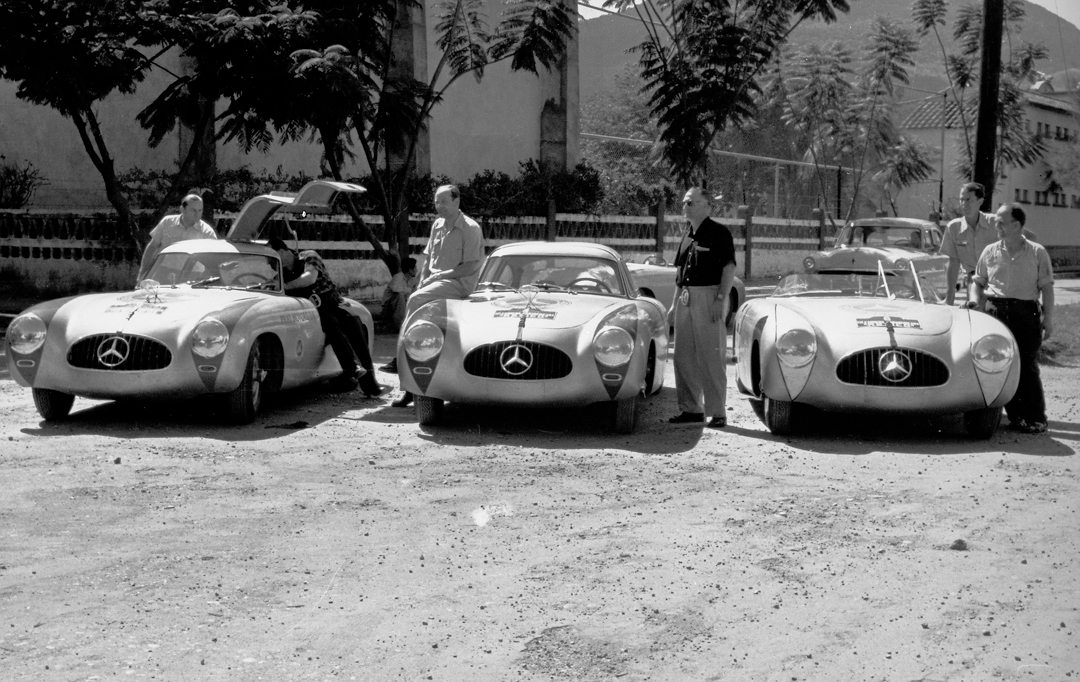
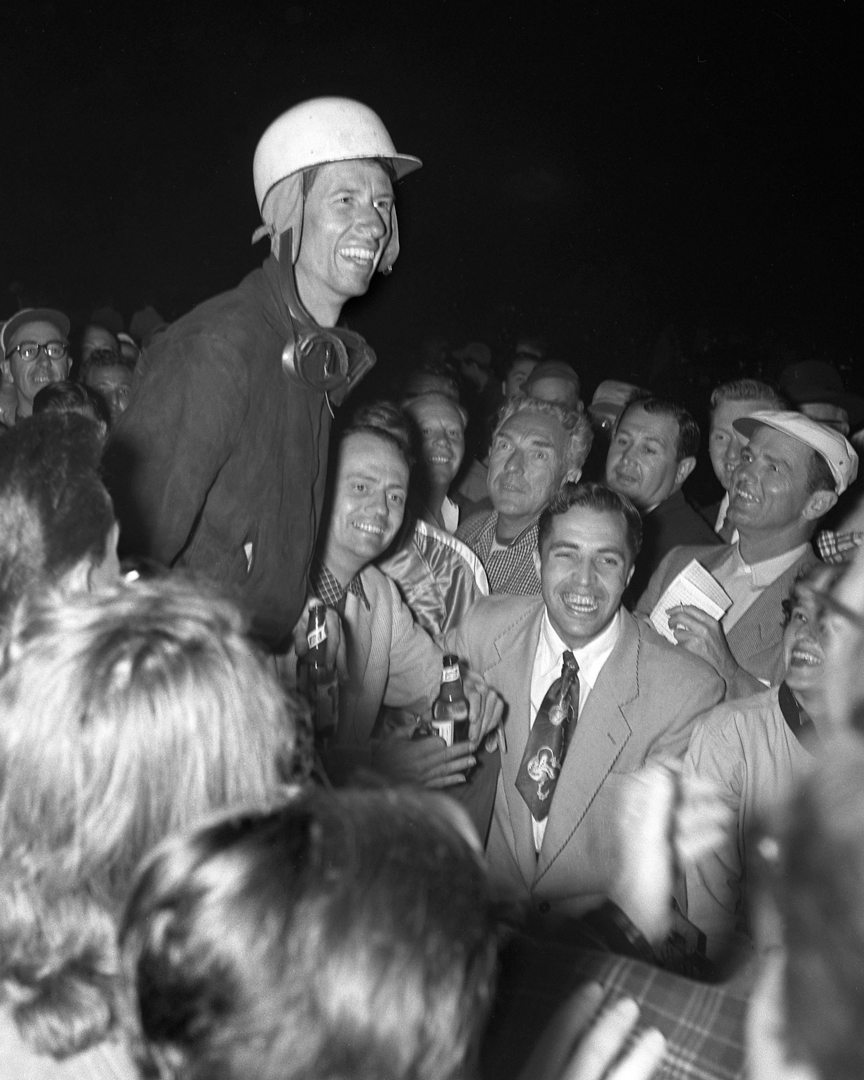
Dan Gurney – “My feeling is that John Fitch was a very important link to an earlier time. John had been part of the Briggs Cunningham effort, so I was rooting for him. That whole Cunningham era was fabulous, a real pioneering effort, and that John Fitch was chosen to be part of it verified the fact that he was a doggone competitive racecar driver.
“I was once asked to say a few words when John was going to be at a get together, and I said I’d love to, but would there be a way that John and I could both have microphones and I would ask a question and he would give an answer. I was told ‘No,’ but I said OK, I would try. When it was time for me to go up and say those few words, as I went up I went over to John, who was sitting at a table between where I was and the lectern, and said, ‘John could you come up with me I’d like to ask you some questions?’ He says, ‘Sure I will.’ So it was really a wonderful thing to be able to do.
“I knew he had raced in the Mille Miglia, and won his category with a 300 SL, that was a great accomplishment, but what I wanted to know was what was it like to work with Alfred Neubauer, the famous team manager from Mercedes-Benz both before World War II and again when Mercedes came back into racing after the war as a way of getting their car-selling business going again. Neubauer had a reputation as a hard-nose, but John said he wasn’t, that he was very kind and very thoughtful, a real team spirit guy intent on bringing things together. That was very interesting, and I hadn’t expected it. Then I asked him what he thought of Phil Walters, who was his teammate there with Cunningham, and he rated Phil about as high as I had, because Phil Walters was always my role model and a really terrific race driver as far as I was concerned.

“He told me a story about Phil that apparently, before the Le Mans disaster in 1955, Enzo Ferrari had asked Phil to come and try out for his Formula One team, but it rained for three days straight there and they ran out of time. So Enzo calls him in and says, ‘Hey look, I want you to drive on our team, you don’t have to do a test, in fact, every time I send a new car over to the States, you end up beating it! So we know that you know how to drive.’ That was a very interesting comment. That came out of John Fitch’s personal knowledge and, of course, not long after that the Le Mans accident took place and Phil Walters stopped race driving at that point.
“Back to John Fitch, I reckon that he was—in addition to his being a fighter pilot in WWII and a good one, and getting captured and all that—a much better driver than people gave him credit for. In those days, he was in there among the top people at the Mille Miglia, which is one race that I would have loved to have driven in myself, but never did. It had the reputation of 1000 miles of Italian mountains and really old-fashioned roads, and was a tremendous challenge. To come through the way he did under those conditions meant he was very, very good.

Photo: Mercedes-Benz
“I enjoyed John Fitch. Even in his 90s he seemed to have a very positive outlook, and really enjoyed himself very much.”
Bruce Kessler – “I remember the infamous first race at Lime Rock, where I said I always thought John let me beat him that day. However, a few years ago (2007–Ed.) at the Labor Day Vintage Festival they honored John and myself from that first race 50 years ago, and he said, ‘I never let anyone beat me.’ It was such a close finish, in 100ths of a second, and was the first really close race that I had been in. Walt Hansgen won it. I was 2nd, with John 3rd. I’d come up from winning the two-liter race, where I’d beaten Bob Holbert to get into the main event, and there was probably not a second covering all three cars. It was the first really close race that I can remember reading about and reading all the press about.
“John was a wonderful driver and a fierce competitor, but that one race was such a standout race at the time in my life—even Sports Illustrated got on it. All I can say is John, above all, I honestly feel, is responsible for a lot of what went on in American motor racing during its time of growth. He helped bring it along and make it the sport it is today. It’s a whole different sport now. He was also responsible for me going to Europe, because he suggested that I replace him at Porsche, when they wanted an American driver.


Photo: Mercedes-Benz
“I really think he set the standard for Americans racing in Europe. He went over there first and then came back and did so much to bring the sport to us.
“He meant so much to the sport, yet if you go to the average amateur race driver today, maybe professional, too, they really don’t know who John Fitch was. It was before their time, so unless they are students of the sport it’s all kind of gone behind them. We’ve been through so many different phases, but I don’t think a lot of that would have happened if we hadn’t had a guy like John Fitch who brought the sport home to the U.S., and was responsible not only for being the competitor he was, but also for his design work and his safety work for the sport.”
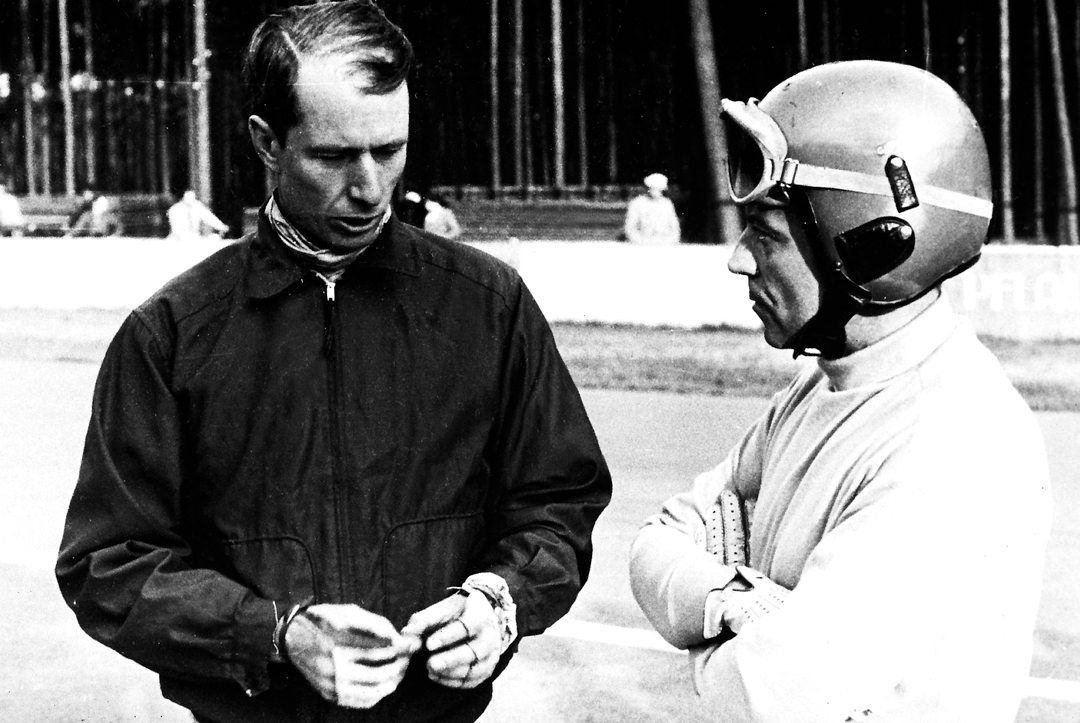
Davey Jordan – “I had received a letter in January 1966 from Mr. Cunningham in regard to co-driving with John Fitch and himself in the 1966 Sebring 12-hour race. The car was Mr. Cunningham’s venerable Porsche 904 that had competed in the previous two Sebring races. It was prepared by Otto Zipper’s racing team, headed by Otto’s master mechanic, Richie Van Der Water.
“I didn’t meet Mr. Fitch until we got to the Sebring racetrack. When he arrived I was very impressed. At 42 years old, he was tall and slender, impeccably dressed with slacks, sport shirt and Tommy Bahamas hat. John’s great smile and personality made it a very special event for me. It was great to see the friendship that he and Mr. Cunningham showed for each other! In practice, despite being one of the older drivers in the race, John was one of the fastest 904 drivers.

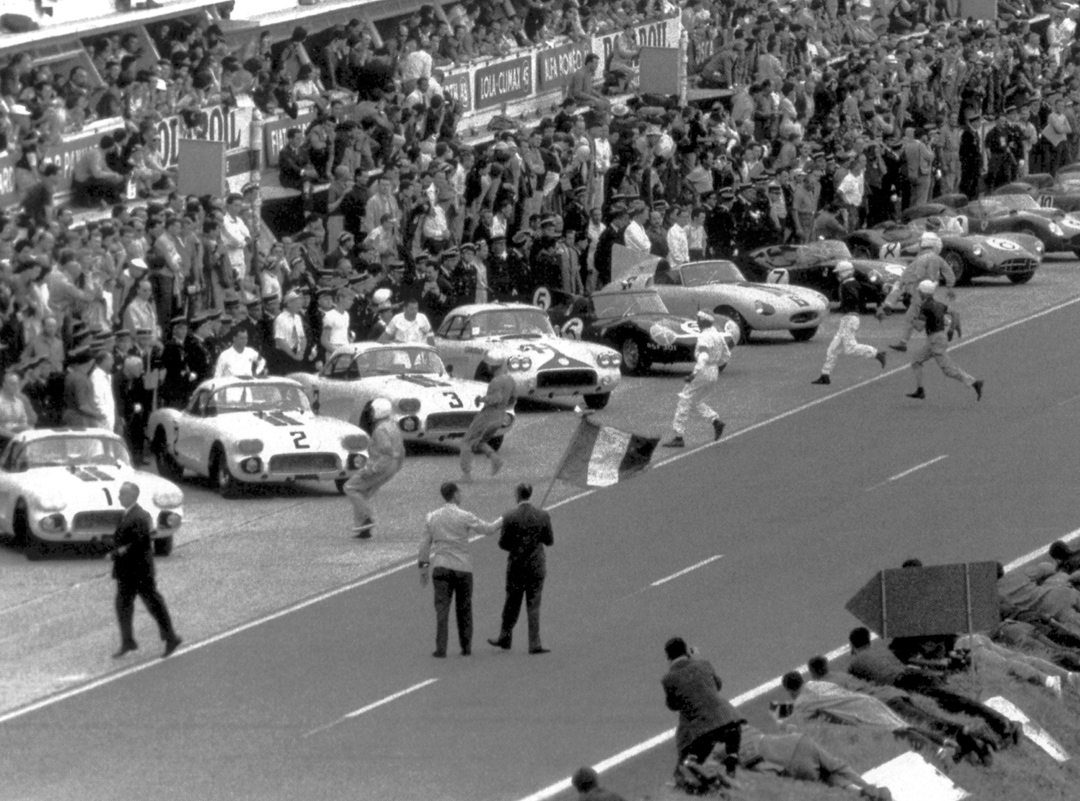
Photo: GM Archives
“Our 904 started the race in front of the factory Porsche 904 entry of three cars, having been the fastest qualifier. In the race, we ran well, behind the trio of factory 904s, until about the eighth hour when a valve spring broke, putting us out of the race. The last thing that I thought would happen. After the race I didn’t see John for many years, until my wife Norma and I were invited to Mr. Fitch’s 90th birthday party. It was held at Art Evans’ home in Palos Verdes, California, and the invitees list included a who’s who of Sports Car racing in the ’50s and ’60s, Phil Hill, Bill Krause, Bob Bondurant, Dick Guldstrand and many more. Today, I still have to pinch myself when I think that I had the opportunity to co-drive with two of the sport’s greatest icons, in their last International race.”
Howden Ganley – “John Fitch was without doubt an American racing icon. It was as a teenager starting to follow motor racing that I first read about him, in particular his 5th place and class win in the 1955 Mille Miglia, followed by his sharing the win at Dundrod that same year, when he was promoted to drive the Mercedes-Benz 300 SLR with Stirling Moss.

Photo: Fitch Collection
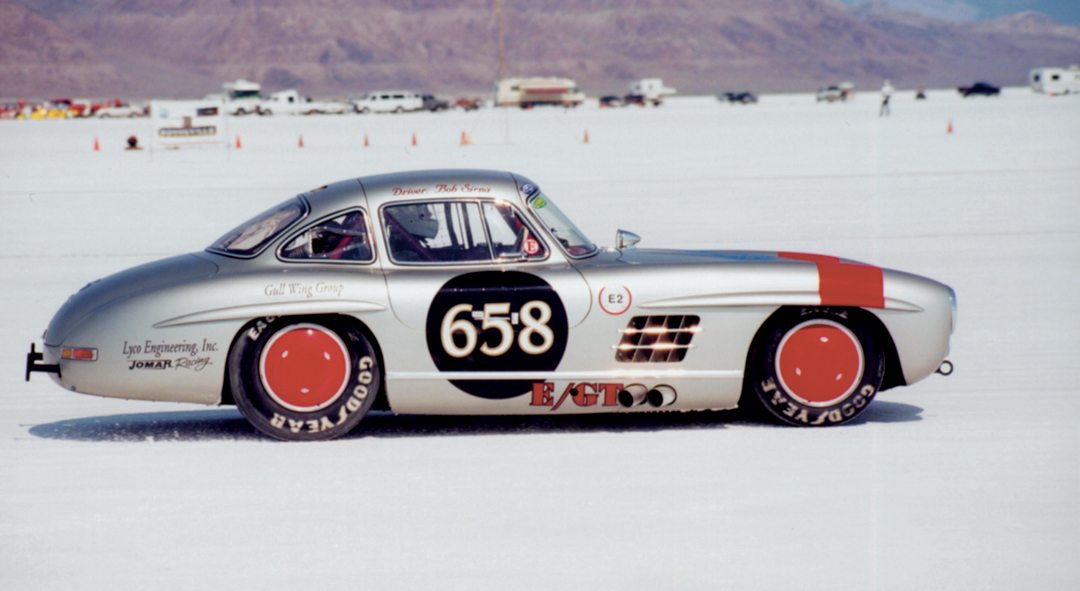
“In later years I was privileged to come to know him, and I think the description ‘delightful gentleman’ fit John perfectly. There seemed to be little that he had not done, from serving as a WWII fighter pilot, being a POW, to then becoming a major force in Chevrolet’s racing effort, the inventor of all manner of safety equipment (including the well-known Fitch Barrier) and the management of the Lime Rock circuit.
“Although he only competed in two World Championship Formula One races, there was very much more to John’s racing career, not least the win at Sebring and the 3rd place at Le Mans. Among his affiliations was membership of the Club International des Anciens Pilotes de Grand Prix F1—the Grand Prix Drivers Club.
“Sprightly as ever well into his 80s and 90s John became a very popular speaker at motor racing functions worldwide. One of his favorite stories was that in 1951 he had won the Peron Grand Prix in Argentina and at the prize giving, he liked to recount, ‘I received a kiss from Eva Peron. She died shortly afterward.’
“John’s was a life lived to the full. He has left his indelible mark on the world, an inspiration to all who were fortunate enough to know him.”
